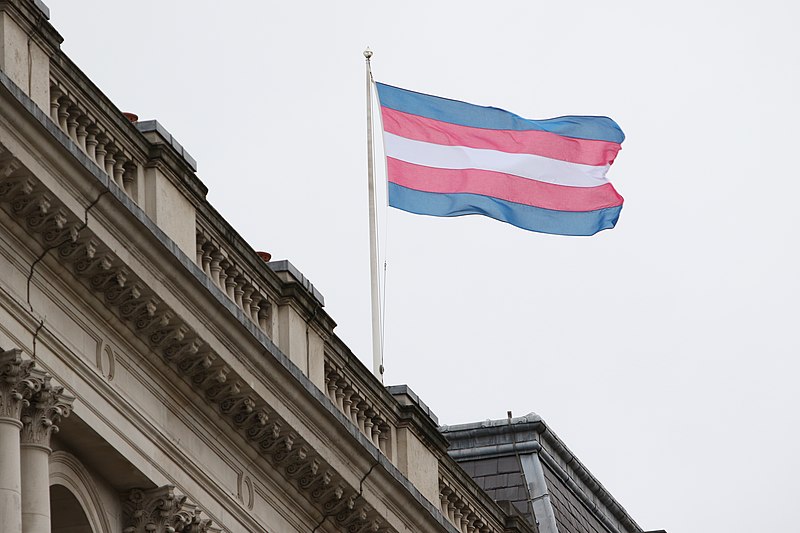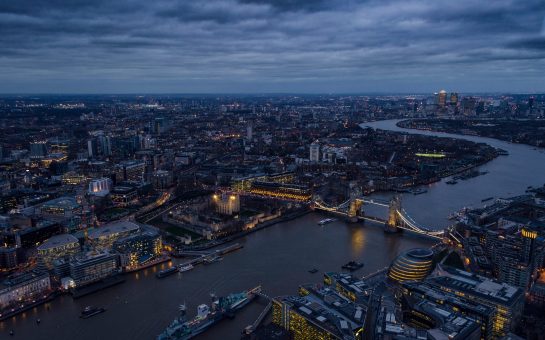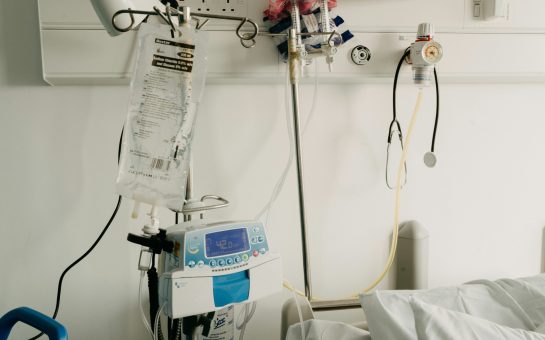As local councils plunged further into crisis and NHS waiting times remained dangerously long, the message echoing from the Conservative Party Conference in October 2023 was a jibe about the definition of sex.
This coincides with new data that shows transgender hate crime has nearly doubled in south west London since 2021.
The speech in question was delivered by the Prime Minister himself, who declared that “a man is a man and a woman is a woman, that’s just common sense.” It spoke to a long-running discourse about transgender rights in UK politics.
Increasingly, these rights have been politicised, leading politicians to reduce complex issues to simplistic soundbites. But how has this impacted the reality of transgender lives away from Westminster?
Between 2021 and 2023, incidents of transgender hate crime have increased by 88% across south west London, according to data from the Metropolitan Police. Incidents have increased year-on-year since 2020 in the area.
This reflects a similar trend across the whole of London, which has experienced a 44% increase in the same time period. More shockingly still, London has seen a 92% increase in transgender hate crime, since 2019. In fact, every area in London experienced an increase in offences between 2022 and 2023.
A dip during 2020 and 2021 in south west London could be attributed to lower levels of social interaction during the Covid-19 lockdowns.
South west London had the second-highest number of transphobic offences in 2023. Though it was south east London that experienced the largest increase, with a 187% rise in offences over the five years.
Within south west London, incidents of trans hate crime are not spread evenly but tend to be concentrated in more urban boroughs.
Lambeth, the closest borough to central London in the south west, recorded the highest number of offences in 2023 with 28 reported. Similarly, neighbouring borough Croydon and Kensington and Chelsea also saw offences enter the 20s last year.
Conversely, the more peripheral boroughs of Richmond, Kingston and Sutton all recorded less than 10 transgender hate crime offences in 2023.
This is likely due to a higher population density in those boroughs closer to the centre.
However, even those in boroughs with relatively fewer offences, such as Richmond, have noticed the changing climate accompanying a rise in transgender hate crime.
The president of St. Mary’s University Pride Society, who wishes to remain anonymous, identifies as bi-gender and feels threatened by these rapidly rising levels.
“For me, it’s very hard for people to see that I am trans, but I am scared for trans people who are not cis-passing. You never know if they’re going to get attacked for just existing,” she said.
“The Conservatives are not on our side and all the other parties are not doing a lot. Some of them are saying, ‘Oh yeah, we are pro-trans’, but then they also say anti-trans stuff. It’s voting for bad or worse.”
The use of trans rights as a political football makes it clear why the community would not feel supported by the upper echelons in Westminster.
But is it fair to say that government rhetoric can be linked to the experience of the trans community facing increasing levels of hate crime?
Firstly, we must acknowledge that the increase in transgender hate crime follows a similar trend to hate crime more generally.
There has been a 21% increase in all hate crime incidents between 2019 and 2023 in south west London. This aligns with the upward trajectory of transgender hate crime offences over the same period.
Transgender hate crime also follows the trend of offences peaking during the summer months, when people are more likely to be outside and interacting. In this way, it does appear to follow broader patterns of hate crime.
The Pride Society president highlights that it was not just her transgender identity that scared her while living in south west London.
“I generally don’t feel safe alone because it’s London. I don’t even know the most likely reason that someone might attack me. It could be because I’m trans, because I’m gay or because I’m mixed race,” she explained.
However, while the number of hate crime offences has increased since 2019, transgender hate crime has experienced a far more dramatic rise. In fact, hate crime more generally has maintained similar levels since 2021.
Though it still constitutes a small percentage of all hate crime in south west London, transgender hate crime is clearly increasing as a proportion of all hate crime. While rates of hate crime have plateaued, transgender hate crime continues to take an increased share.
In 2023, transgender hate crime made up 2.04% of all hate crime offences in south west London.
When considering that only 0.55% of the UK population identify as a different sex to that assigned at birth, it becomes apparent that transgender people are subject to a disproportionate amount of hate crime.
As overall trends in hate crime cannot explain such a rapid increase in transgender hate crime, we must return to Sunak’s jibe at the Conservative Party Conference. It is, perhaps, a symptom of what is more broadly termed as the ‘culture wars’.
In the month following Sunak’s well-quoted speech on the 4th October 2023, transphobic hate crime reached its highest peak in five years in south west London, with 20 offences in one month.
It could be argued, then, that high-profile policy decisions and speeches like this one contribute to the growing number of transgender hate crime offences.
A spokesperson for Mermaids, a charity that supports trans, non-binary and gender-diverse children and young people, believes the actions of the government have led to a hostile environment for transgender people in the UK.
“Unfortunately, the extremist anti-trans rhetoric coming from our Tory government has helped cultivate a climate of fearmongering and intolerance against the trans community,” they said.
“In 2023 there was an 11% rise in transphobic hate crime across the UK compared to the previous year, and on a more global stage, the UK has slid from first to seventeenth place in the European league of LGBT rights.”
While overall trends in transgender hate crime follow similar patterns to hate crime offences more generally (as shown in fig. 2), the outliers can more specifically be attributed to high-profile political moments.
For example, the other notable outlier came in April 2022, with the second-highest number of offences in a month at 19. It is sadly unsurprising that on the 31st March of the same year, the Government controversially announced it would not ban conversion therapy for transgender people.
The rapid increase in transgender hate crime year-on-year can also be linked to an increasing number of high-profile speeches and policy measures targeting transgender rights.
The timeline shows newsworthy speeches and policy decisions as reported on the BBC News website, through the search term ‘trans’.
Last year saw a significantly higher number of prominent speeches and proposed policy measures compared to previous years. This trend continues as just this week, it was announced NHS England would stop prescribing puberty blockers to children in gender identity clinics.
It is also notable that these spikes only occur where policy or speeches are distinctly negative towards the trans community. On the 17th January 2023 the Government u-turned and included transgender people in their ban on conversion therapy.
January and February had lowest number of offences in the whole of 2023 in south west London (shown in fig. 2).
Though the data does show a correlation between Government discussion of trans rights and spikes in transgender hate crime incidents, we must be cautious in attributing causation. Several factors can contribute to spikes, though the evidence remains compelling.
What can be interpreted at a broader level is that as the Government grows more comfortable with using language which undermines trans rights, transgender hate crime continues to increase.
This would indicate that the environment created in Westminster has made transgender hate crime seem more permissible in wider society.
The impact on transgender lives is more than apparent. Being disproportionately on the receiving end of hate crime incidents contributes to a feeling that the UK thinks negatively of them.
A 2023 YouGov poll shows that over half of British trans people feel that the public holds negative views of them, while only a tenth believe the public hold positive views of them.
This is a stark contrast compared to over half of lesbian and gay people who believe the public think positively of them. It would suggest that there is a distinct experience shared by the trans community that does not align with other forms of hate crime.
In this way, Westminster’s mobilisation of gender identity as a policy issue can be held as a contributing factor to this unique experience.
“I’d be scared to come out in public. It makes me feel like if [the Government] are able to change the laws to make being trans harder, then we’re screwed,” asserted the Pride Soc President.
A Government spokesperson said: “The UK has a proud history of LGBT rights and does not use anti-transgender rhetoric.”
As levels of transgender hate crime continue to rise in south west London, what matters most is that we find a way to change that trend.
“The trans community needs to be granted the same protections and freedoms as the rest of the population – it is their basic human right,” say Mermaids. “Trans people deserve to live free from violence, bullying and isolation.”
Causation is difficult to pinpoint. By normalising language such as that used by the Prime Minister at his Party Conference, however, the Government have shown little sign of creating a society which guarantees the rights of the trans community.
Featured image credit: The Foreign and Commonwealth Office, via Wikimedia Commons under CC BY 2.0 licence





